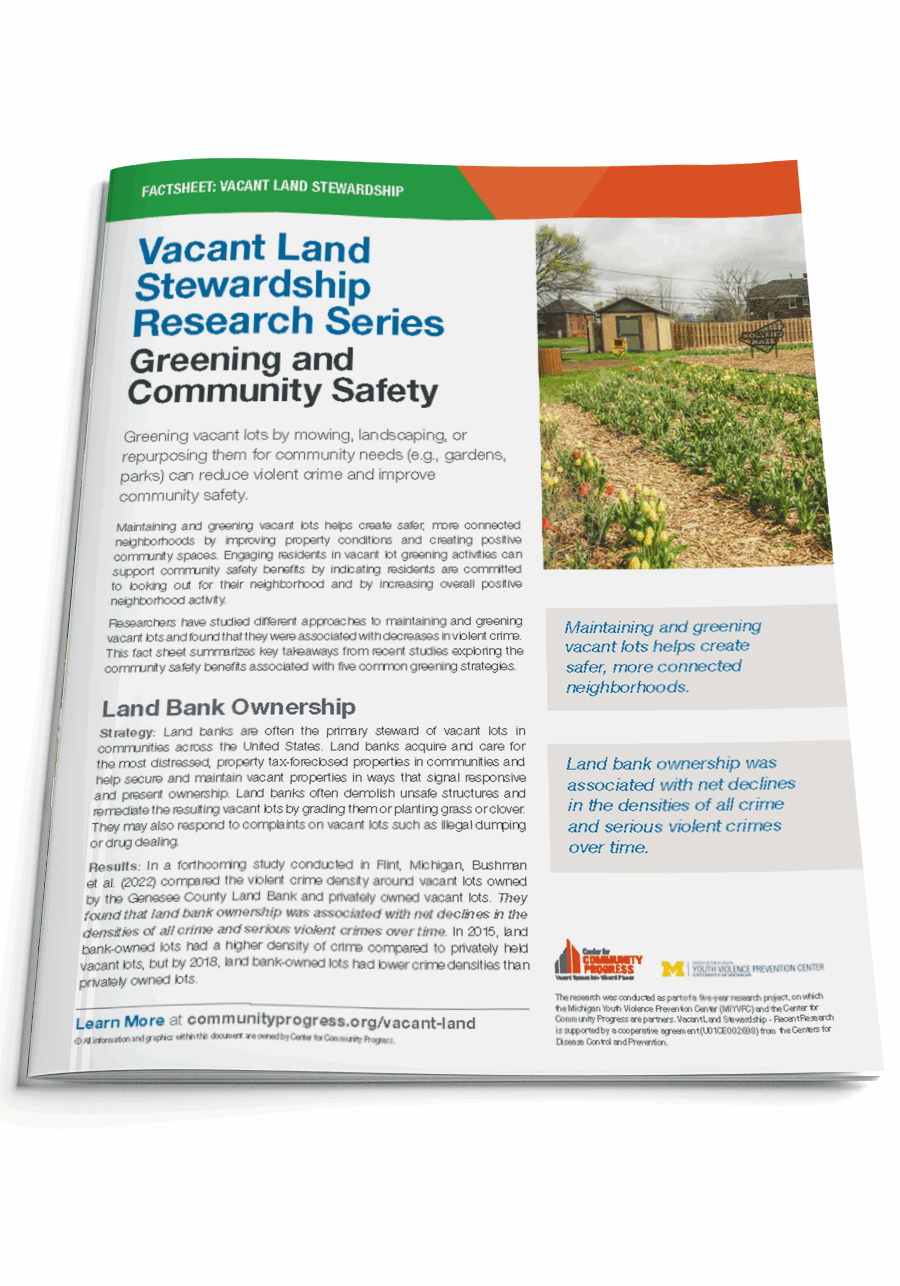Greening and Community Safety
Vacant Land Stewardship Research Series
Topic(s): Land Banks, Vacant Land Stewardship
Published: November 2022
Geography: Michigan, Ohio, Pennsylvania
Author(s): Center for Community Progress, Michigan Youth Violence Prevention Center at the University of Michigan School of Public Health
Greening vacant lots by mowing, landscaping, or repurposing them for community needs (e.g., gardens, parks) can reduce violent crime and improve community safety.
Maintaining and greening vacant lots helps create safer, more connected neighborhoods by improving property conditions and creating positive community spaces. Engaging residents in vacant lot greening activities can support community safety benefits by indicating residents are committed to looking out for their neighborhood and by increasing overall positive neighborhood activity.
Researchers have studied different approaches to maintaining and greening vacant lots and found that they were associated with decreases in violent crime. This fact sheet summarizes key takeaways from recent studies exploring the community safety benefits associated with five common greening strategies:
- Land Bank Ownership
- Professional Mowing
- Community-Engaged Mowing
- Professional Landscaping
- Community-Engaged Vacant Lot Reuse

Topic(s): Land Banks, Vacant Land Stewardship
Published: November 2022
Geography: Michigan, Ohio, Pennsylvania
Related Publications
Other Related Content
Subscribe to join 14,000 community development leaders getting the latest resources from top experts on vacant property revitalization.
